Wanted to take a moment here at the start to mark the passing of a man I never met, yet whose research efforts I have used constantly for years now. I’m speaking of Mike Voiles, the creator and curator of Mike's Amazing World of DC Comics. Which might seem to be a bit outside of my local purview, except for one thing. Mike’s site included a page dedicated to The Newsstand, via which you could bring up all of the comics that were on sale in a given month, either by cover date or on-sale date (Mike used the Library of Congress as his source for his on-sale dates). Building the site must have been a massive undertaking, continuing to maintain it moving forward must have required herculean efforts, but he did it, for years. A couple of weeks ago, visitors to the site were surprised by a new opening graphic, one that depicted Death from SANDMAN along with a written announcement that Mike had passed away. Before his departure, Mike had apparently made arrangements to keep the site going, and so it’s still there now, being looked over and updated by whomever he passed it on to. Beyond that, though, I really know little about the man, apart from a scant bit of biographical information that’s given on the page itself. Regardless, let’s all raise a glass to one of us who built something lasting and wonderful in his time on this Earth, and let’s all try to take pains to remember him whenever we have reason to sort through the massive database that he spent years creating.
I had a dumb historical story that I had intended to tell, but I think it’s just a shade too mean-spirited to follow that opening. So I’ll hang onto that one for another day. In the meantime, let’s get into this week’s questions and comments and let that guide us through this opening section:
Alan Russell
Marvel unsurprisingly has a ton of characters we haven’t seen in a long while. Does anyone peruse the names and lists of characters from time to time, to see if there’s anything worth another go? Or does it not really work like that?
It doesn’t really work in such an organized fashion, Alan. Typically, when an obscure character from yesteryear turns up again, it’s because either a writer or an editor had some hankerin’ to use them again. I’m thinking of figures such as Sarnak, whom Jed MacKay brought back in the pages of MOON KNIGHT decades after his original WEREWOLF BY NIGHT appearances. Nobody was particularly stumping for Sarnak, nobody ever really much remembered him—I didn’t, not really, and I had read those WEREWOLF comics in my youth. For characters that were headliners of one sort or another, they’re more likely to crop up as we study which characters are hitting significant anniversaries in the coming year. From that, you might get things like the recent DARKHAWK Anniversary Special and then limited series, or the NIGHT THRASHER limited series that’s upcoming now. But there isn’t a whole lot of rhyme or reason to it.
Zach Rabiroff
We are in the alternate reality of Earth-B-Voort, in which you ensconced yourself at DC Comics rather than Marvel in the early 1990's. You were given a free hand to choose a family of titles, and fashion it in your preferred direction, rather than the one our reality took it. Which titles did you choose, and what different choices did you make with them?
That’s kind of too broad a game to play for me, Zach, with too many variables that are up in the air. I can speak in terms of generalities about which DC characters I might have a particular love for (it tends to heavily favor the Julie Schwartz-edited characters from the 1960s and 1970s.) But at the point when I came into the field and for many years afterwards, I was not yet properly skilled enough to have been given any characters or series of note. So we can make believe that through magical means, a very young me was handed the reins to SUPERMAN or some such, but the idea that the me of that period would make better choices than Mike Carlin, who edited those titles then, is laughable. I know this is just a thought-exercise, but I tend to take those a bit too seriously for my own good. It’s why I’m always a bit too put on the spot when somebody asks me to name my favorite something.
JV
I always wonder was one of the success factors of the CC X-men the fact that it 'stood alone' - you felt it was connected but it was in its own corner of the Marvel U (ironically I felt the X- movies also benefitted by being in their own Fox movie Universe for 2 decades).
CC was smart to bring in comic and pop culture tropes that made X-men feel relevant (Aliens is a hit movie so we get the Brood, Simonson's Thor is popular so the teams go to Asgard, etc), but still having it feel like it was standing on its own.
Do you think the X-Titles benefit from tying into the larger Marvel U or being off on their own with more tangential links to the rest of the lines (Avengers, Spidey, etc)?
I think the only correct answer here is yes and yes, JV. Which is to say, there were benefits to being able to stand a bit off to the side, and there were also benefits to being able to interact with the greater Marvel Universe. In those early days especially, there weren’t whole franchises worth of titles, nor specific editorial offices dedicated to same. So while you would get crossovers and eventually big Event series, on a month-by-month basis, everything was a bit looser overall. Which is to say that, for most of that time, FANTASTIC FOUR was just as siloed as X-MEN was, in its own way. And so were DAREDEVIL and HULK and a lot of the other books. The exceptions tended to be Avengers-related titles, since you’d have characters appearing in two or more titles simultaneously. So if something big was going on in your book, you might cut away to a panel or two of the Avengers and the FF and whomever not being able to get there for some reasons. Or, often, you wouldn’t, you simply wouldn’t worry about it. There wasn’t the kind of expectation among the audience that exists today where if some super hero has some problem to face, why doesn’t he call up the other forty super heroes he has on speed dial for some help?
Craig Byrne
I've become obsessed with Marvel's Epic Collections line, and I was curious: Do you have any volumes that you especially love and/or would recommend?
My answer here is going to wind up being the same as it often is, Craig: I like all of the earliest volumes, where you can easily find all of the formative Spider-Man or Fantastic Four stories or whatever in a single affordable volume, Back in my reading days, it was way harder if you wanted to experience the stories in that fashion. Also, while I don’t have specific volumes that I can point to, I do like it in certain instances when we do a volume that contains all of a given character’s appearances chronologically—like all of the earliest Doctor Doom stories in one volume in the order that they came out. Oh, and I liked having all of MIRACLEMAN in a single softcover volume recently.
David Baroldy
I’m curious about the background, and your feelings on, the Robinson/Kirk era of Fantastic Four. Going in, were you aware that this would be it for the FF (at least for a while)? If so, were there specific things you wanted to accomplish in the run? Where’d the idea for the radically different (RED?!?!) costumes come from? Do you feel like the run was artistically successful, or was it one where you didn’t quite get to where you were hoping to go?
Well, David, the thing is, that run wasn’t edited by me. My last issue editing the series came right before that, and I handed control of the book over to Mark Paniccia for that run. I will say that I thought James Robinson and Leonard Kirk were a pretty good team for Mark to have put onto the series. I didn’t like that Rian Hughes logo especially, but that’s what makes horse races. I never would have done the red costumes, but they definitely looked striking, especially at the outset. And that’s exactly right, when you come down to it, the whole point of having somebody else edit that series after so many years was for him and his crew to do things that I wouldn’t do, for good or ill. I didn’t feel that the central conceit of that run—that there was a secret past suitor of Sue’s who had been responsible for many of the villains and woes that the FF had faced over the years really held water. It was an attempt to do one of those Alan Moore-style “Everything You Know Is Wrong” storylines, but I didn’t think that it was plausible. There were other things that I liked, though—I thought there was some nice business between Valeria and Doom along the way, for instance, and I liked the notion of Ben going to prison after being framed for murder. And no, nobody going into that run thought that we’d be putting the series on hiatus shortly, that was a thing that developed as we got deeper into planning SECRET WARS along the way.
Cory T
I was recently reading about an artist that received some criticism back when he was first starting in the industry. He did not take the criticism well and indicated his success was proof that the editor didn’t know what he was talking about. Honestly though, I think the editor was right and had the artist taken the advice he would be a stronger artist today. Do you find most people are receptive to your analysis of their work? Or is it difficult to navigate helping an artist or writer with a critical suggestion?
Depends entirely on the individual. And in practice, it’s not like I’m an all-wise, always-right, always-perfect purveyor of truth all the time either. I’ve got a lot of experience, I’ve been doing this for a very long time, and so I have a good fundamental understanding of how a comic book page works and when it doesn’t, and I can see when a drawing might be foreshortened poorly, or a background wasn’t created following the principles of proper perspective, or any number of other factors. So in general, I know what I’m talking about. But I’m not always right. Still, if I’ve hired you to work on a series for my office, then you as an artist work for me, and it’s a requirement of that employment that you address any shortcomings in the work that I see, or convince me that the problem that I’m pointing out isn’t actually a genuine problem at all. If you don’t do that, well, chances are you won’t be on whatever assignment that is for very long, regardless of wherever else you might wind up in the future of your career. I don’t care about that, I care about the comic book right in front of me, the one that we’re working on today. That all said, the best artists in the field tend to be the ones who are the most adept at taking constructive criticism like this on board and correcting whatever shortcomings there might be.
Jeff Ryan
You've written where you weren't sure about bringing Bucky back as the Winter Solider, not because Ed Brubaker could tell a good story about it but because at the story's long end we'd have a now-alive Bucky with no place in the Marvel Universe.
Are there any resurrected character stories at DC where you thought "geez, I wouldn't have done this if I were editor?" Wally West? Jason Todd? Wally West again? Choose from a selection of Superboys?
Well, it’s always Monday morning quarterbacking in these situations, so take everything that I’m going to say with a grain of salt, Jeff. But while I understand the logic behind why they did it, I thought it was a huge mistake to bring back Barry Allen, even though he was my Flash when I was growing up. Sort of like Captain Mar-Vell on our side of the table, Barry had a really difficult time sustaining a series in his final years, and his demise in CRISIS elevated him to a kind of sainthood within the DC cosmology. And Wally West as the young sidekick who had to step up and fill the boots of his mentor—a mentor who was now accorded a whole lot more awe and reverence that he had been when he was alive—was a much better core characterization to build a series on. I kinda feel the same about Jason Todd. It seems like recently folks at DC have started to crack what to do with him, but all bringing him back did was be transgressive. You didn’t need another Robin, there were already two or three on active duty. But Jason as the one who died, the one who Batman failed by dragging him into this life (even if the real missteps were Jason’s own) made him a valuable piece of the canon even though he was dead. Has Jason Todd done anything especially meaningful over the past two decades? He’s sort of the case study in terms of why I was so hesitant to dig up Bucky’s grave. The Winer Soldier could easily have gone that same route. And even there, in recent years, it’s been a bit of a struggle to find new and interesting things to do with that character, now that every possible ounce of drama has been wrung out of his reunion with Cap, his redemption for his past actions, and his recovery from decades of PTSD.
Mark-Man
One of my favorite covers as a kid was that Invincible Iron Man #76 you had in your last post (I’ve had it! I’m done for!). My mom gave it to me when I was a kid home sick from school and it started my lifelong fandom of old shell head. Years later, I found an Invincible Iron Man #9 … with almost the exact same cover and the same story. So #76 was new to me, but not new at all. I know it’s before your time, but do you know how often that happened or why? Maybe it was a missed deadline so it was just a one-off?
I tell you, Mark-Man, you’ve definitely come to the right place. Because not only do I know the answers to all of your questions, but I wrote a long piece about this over at my blog, which also includes a comprehensive listing of just what issues contained unscheduled typically last-minute reprint stories. But the short answer for those who have a phobia about clicking links is that in the 1970s, press time was booked in advance, and if your book wasn’t ready to be printed when it was time for those presses to run, you got charged for the printing job anyway. And in that era, from an organizational standpoint, Marvel was very much a wild west operation. Consequently, a lot of books didn’t get finished in time—which meant that a reprint of some earlier story would be stuck into the magazine since the printing was going to be paid for either way. Usually, these reprints were last minute enough that they came out under covers illustrating the story that wasn’t finished in time, but every once in a while, when there was enough of a heads up, you’d get a new cover for the reprint story. Or, as in the case of that IRON MAN issue, a reworking of the original cover from when the story was first printed.
Ray Cornwall
1. Have you been to Disney, and do you have a favorite place to go there? 2. Do you have a favorite piece of Marvel merchandise, something that you treasure either for personal reasons or just because you like it?
I’ve been to Disneyland once, Ray, under strange circumstances and not entirely by choice. This was a few years ago, and I was a guest at, I think it was Wondercon, which was held in a venue right near to Disneyland. Accordingly, the Marvel people were put up in the Disney hotel, where we were treated very well indeed. Anyway, on Friday evening, after the show had let out, I ate dinner and then walked back towards the hotel. And it was late, but not really that late. And I noticed that there was a stop for the monorail just across from the hotel. Having my Disney I.D. with me that gives me access to the parks, I thought that it might be nice to get onto the monorail and do a circuit around the park, just to sort of eyeball everything. So I did that—but I was a bit of a chump because I didn’t realize that the monorail didn’t make a full loop. Instead, it went to the furthest point in the park and then terminated. So I got off, but I thought, no problem, I’ll just go around the other side, get onto the outgoing monorail and ride it back to the hotel. And just after I had that thought, an announcement came over the loudspeaker indicating that the monorail was being shut down for the evening due to the impending fireworks display. So i wound up walking through the entire park, amidst huge numbers of exiting parkgoers, in order to get back to where I started. Not really the ideal way to do a Disney park, I think. In terms of Marvel merchandise, I have a bunch of different rare and special things that I’ve accrued over the years. But the first thing that comes to mind is a paperweight and note-holder that was sculpted as the face of the Thing and which wasn’t offered for sale—it was only produced in-house for the licensing team. As I was working with them at the time, Gloria Birulin scored one for me. It’s a pretty great sculpt to, although the color skews a bit more brown than orange, making Ben seem to some eyes more like the turd than the Thing. I just took a quick look around online to see if I could score an image of it to share here, but there isn’t one—these things are rare items indeed.
Steve McSheffrey
Isn't it a bit soon to after the last Thunderbolts mini to reuse the name with a new cast and mission?
Nope.
Joseph Ruiz
Hi Tom! When a new writer is brought to a series, does the editorial team give them an idea for a new direction, or is it expected that the writer bring an idea with them? Thanks!
It depends, Joseph. In just about any case, even if a writer is given some starting point or a vector, it is up to them to come up with the actual story. But I’ve made no secret of the fact that, when I go to cast somebody on a new series, I tend to first organize my thoughts on approach and tone and direction in a document that I’ll write up and send to anyone who wants to pitch me for the book. This way, that writer in question has a clear idea of what I’m thinking about and what I’m looking for. From there, it’s up to them to deliver a story that fulfills whatever objectives I may have laid out—or which is so good that I don’t really care about the objectives left unachieved. For example, we printed my document on the Hulk in the first IMMORTAL HULK hardcover, so it’s relatively easy to find. And from that, you can see that I had a particular tone that I wanted to achieve, something leaning more towards horror than straight up super heroics. What Al Ewing did in response to that outline was very different and a lot more involved than what I laid out. So it isn’t in any way my story. But it did grow from some of the seeds that I scattered in front of him.
Alex Starbuck
I was watching the 1986 BMX masterpiece "Rad" earlier today (as one does on a Saturday morning) and noticed this rack of comics in the background. I've enclosed a screenshot. Are there any interesting or noteworthy issues that you can spot?
I don’t know about noteworthy, Alex. But a quick check of the aforementioned Mike’s Amazing World Newsstand (R.I.P. Mike Voiles) tells us that these would have been books on sale around August of 1985, so that’s when this scene must have been shot. That’s IRON MAN #200, an anniversary issue that introduced Iron Man’s “Silver Centurion” armor. The first issue of QUESTPROBE starring the Human Torch and the Thing and based on the irritating computer game of the same name. ROM #72, which guest-starred the Rick Jones incarnation of the Hulk. UNCANNY X-MEN #199, in which Rachel Summers adopts the codename Phoenix for the first time. The first issue of the NIGHTCRAWLER limited series both written and drawn by Dave Cockrum. FANTASTIC FOUR #284, in which Sue Richards adopts the code name Invisible Woman. SQUADRON SUPREME #5 which contains possibly the wordiest page ever printed in a Marvel comic. AVENGERS ANNUAL #14, which crossed over with and shared pages with that year’s FANTASTIC FOUR ANNUAL, which wasn’t out yet. CRISIS ON INFINITE EARTHS #8 with the death of the Flash (from which he should never have returned.) And a wide assortment of other titles.
Behind the Curtain
.Back in 2013, I wound up as a character in the LEGO MARVEL SUPER HEROES video game. Not a playable character, unfortunately, but more of an Easter egg character. You see, the game was set in a model of Manhattan, and you as the player could go inside of a number of different buildings for particular missions or to complete side-goals. One of those buildings was situated at the actual then-offices of Marvel Comics, and going inside would allow you to run around the Marvel Bullpen and to interact with a number of the staff members who you’d find there.
So what you see above is the official Lego design sheet for my animated Lego avatar. That’s how I appeared in the game—not a bad likeness at all. A bunch of other folks were included as well, including EIC Axel Alonso and “Agent M” Ryan Penagos. My one real regret was that the game was entirely digital, and so no three-dimensional Tom figure was ever created. I’d have bought one.
Pimp My Wednesday
Here we go again! Comics to keep your holiday build-up bright!
It’s the terminal seconds of Moon Knight in the pages of the character’s 30th and final issue. Make no mistake about it, Marc Spector dies in this issue, for real. And to send him off, Jed MacKay is once again joined by Alessandro Cappuccio, who launched the title alongside him a while ago. But never fear, we’re not done with this creative team or this series completely just yet. There’s more to follow in a month’s time.
You know, MOON KNIGHT and THE PUNISHER are not the sorts of books that people expect me to be working on, but I’ve really been enjoying both series. Here, in new Punisher Joe Garrison’s second outing, he’ll need to fight his way through a skyscraper packed full of super-villains who want to kill him, all to get to the one person who can point him at his family’s killers. It’s another balls-to-the-wall romp by David Pepose and the especially great Dave Wachter.
And Associate Editor Annalise Bissa continues to push the boundaries of good taste and sanity with another collection of MARVEL ZOMBIES: BLACK, WHITE AND BLOOD stories. This one’s got a really funky Wasp story from Peach Momoko, a crushing story centered around the Black Widow and Hawkeye from Mat Groom and Alessandro Vitti, and a throwback Luke Cage tale from Cheryl Lynn Eaton and Leandro Fernandez. Come ready to fell all of the feels, because this one pulls no punches.
And over in AVENGERS UNITED, the second of five acts reaches its climax as the Avengers realize that in order to get to the bottom of what’s going on, they’re going to need to journey to the far-off world of Ghesh. It’s brought to you by Derek Landy and Phillip Levy.
A Comic Book On Sale 20 Years Ago Today, December 10, 2003
I typically set up these Newsletters close to a week in advance, though I don’t do most of the writing until the night before. So I had no idea that Mark Millar was going to be the subject of such scrutiny and ire this past week. Serendipity, I suppose. Because WANTED #1 was Mark’s first real break-out creator-owned hit, and the book that put him on his current trajectory. It grew out of ideas that Mark had been playing with for some time. Years earlier, when I was working in the Spider-Man office, Mark and I had spoken about a prototypic version of a similar concept, in which the son of the Spider-Man villain the Shocker would inherit his father’s costume and gear and step into the inner worlds of costumed super-villainy. It wasn’t exactly WANTED, but it shared some of the same DNA. And, of course, with the end of the Five-Editors-In-Chief at Marvel, it didn’t wind up happening. Mark had also pitched a different version of this concept to DC as a revival of SECRET SOCIETY OF SUPER-VILLAINS, but didn’t get a bite there either. But after he’d broken out with THE AUTHORITY and then THE ULTIMATES, Mark retooled his ideas once again, and this time Top Cow bit. The underlying notion of the son of a super-villain inheriting his dead father’s name and gear and place in the underworld hierarchy remained the same, but pretty much everything else was different. Artist J.G. Jones gave the artwork a beautiful hyper-realistic sheen. In typical Millar fashion, he and Jones made their lead character Wesley Gibson look very much like Eminem, in the hopes that this might attract the actor to want to take on the role. That didn’t happen, but the property was both optioned and then filmed and released in short order, with James McAvoy in the lead role. The film took some liberties with the source material—the comic book was set in what was clearly meant to be an alternate version of the DC Universe, whereas the movie tossed out all of the super hero material, making Gibson instead a super-assassin working for a cult that, wait for it, gets its instructions from a future-predicting loom. But the essence of the story remained the same, with a powerless underdog being given all of the wealth and fame and license to behave badly that he’d ever dreamed of. These were themes that Mark would return to in various forms all across his career. There was a forgettable sequel film, WANTED 2, as well. But what the movies really did is to confirm for Millar that it was possible to create an independent comic book, get the property optioned and then actually made, and so that became his guiding light from then on out. Rather than committing to any one idea for too long, Mark instead went on to pair up with some of the best artists in the field. In almost every case, they would produce five or six issues of a single concept, a single trade paperback’s worth of material that essentially laid the blueprint for a possible film. And then Mark would move on to another. This was a fruitful strategy as it turned out, as Mark was eventually able to sell his “Millarworld” to Netflix for a significant payout—one that he shared in equal measure with his artistic contributors, a situation that doesn’t often happen in these instances.
A Comic I Worked On That Came Out On This Date
A short one here. This issue of IRON MAN was released the same day as WANTED #1, December 10, 2003. It was the third part of writer John Jackson Miller’s storyline in which Tony Stark became the United States Secretary of Defense. But it’s really notable for what was outside of the comic, rather than what was in it. Because that was the first Iron Man cover that I bought from artist Adi Granov. Adi wound up doing a number of covers across the remainder of this series, and then was tapped to illustrate the launch of the follow-up series, which was written by Warren Ellis. Thanks in large part to Adi’s hyper-realistic artwork, that “Extremis” arc became a visual calling card when Jon Favreau and the nascent Marvel Studios was working to get the first Iron Man film made—Favreau apparently carried a copy of the book with him everywhere. He also hired Adi to work on the visualization of the film, including the design of the film version of Iron Man’s armor. From there, Adi became a regular contributor to many of the films that were thereafter produced. But it all stems back to this cover. He’d been found by C.B. Cebulski, who was Marvel’s talent scout at the time, and who brought Adi’s work to the attention of the editorial team. And I snatched him up really fast for IRON MAN. Adi also did SHE-HULK covers to me when that title launched, and at least one SILVER SURFER cover after he mentioned to me at a dinner that he really wanted to paint that character. I’ll still reach out to him about doing the occasional piece today, although I need to vie for his time a bit more now that he’s so in demand in other areas.
Another Comic I Worked On That Came Out On This Date
SPECTACULAR SPIDER-MAN #8 also came out on December 10, 2003, and was the first issue of the series that I edited. The book came to me not under the greatest of circumstances. Before this, it and its predecessor series PETER PARKER, SPIDER-MAN had been mostly edited by Axel Alonso, with Paul Jenkins writing, and first Mark Buckingham and then Humberto Ramos illustrating the book. It had been a good series with a number of memorable stories, but difficulties began to crop up. The first one was that the series was relaunched, both in an attempt to spike sales and also to bring it into line with the ethos of the moment, which said that all storylines needed to run for 5-6 issues so that they could be collected as Trade Paperbacks. This was a bit of a struggle for Paul, whose forte was more singular pieces. There was also a desire to use the series to connect to whatever was going on in the world of the films, so as to not need to bother JMS, who was then writing AMAZING SPIDER-MAN, with that problem. So the book’s first arc had featured a Venom story, and this second arc was focused on a redesign of Doctor Octopus to bring him more visually in line with SPIDER-MAN 2. But the big issue, the one that caused so much internal fighting and strife, and which led to Axel asking to be taken off the title, was Humberto Ramos. Humberto was a popular artist, and at the time he was hired, he was seen as a genuine asset thanks to his manga and anime-influenced style, an approach Bill Jemas was sold on due to the enthusiasm of his kids for manga at that moment. This, it turned out, was a passing phase, and after his kids’ attention moved away from manga, Bill began to have louder and louder complaints about the artwork. He wanted Humberto replaced with a more representational artist, something that wound up happening a few months later. Axel had been standing up for his artist, but it was taking a tool on him, and so Joe Quesada wound up passing the series to me. It was a bit of a poisoned chalice, as it was eternally a title that was expected to fulfill whatever larger need there might be in terms of story material so that JMS’s series could continue without interference. But much of that was still to come. What I remember about this issue is attending the Chicago comic convention that year, just as work was starting on the book. There, I met Humberto Ramos, with whom I hadn’t really done much of anything before that time, though I’d been a fan of his work. As we shook hands, Humberto let me know that, years before, I had given him a portfolio review at a much earlier San Diego convention—and in that instant, my blood froze and my mind spun back, trying to recall an interaction that would have been impossible to remember, one portfolio review among hundreds. Was I a jerk? Did I discourage him, or make him feel bad, or unworthy, or whatever? Fortunately, Humberto continued, saying that I told him at that time that he wasn’t ready yet, but that he was about a year away, and some specific things to work on. And he did, returning the following year, where he got his first big break. So in a rare instance, my past self hadn’t fouled things up for my present self.
Monofocus
The one new series I’ve added to my watch list is LOVE LIKE A K-DRAMA on Netflix. It’s really just another iteration of the earlier series FALLING IN LOVE LIKE A ROMANTIC DRAMA, and it uses the same premise: bringing together eight young aspiring actors and having them compete to perform in a series of filmed romantic short movies in the hope that actual emotions will begin to stir in the participants and they’ll begin to have genuine feelings for one another. The change-up in this incarnation is that all of the action now takes place in Korea, with the four guys all being Korean while the four girls are all Japanese (and don’t all speak the language fluently.) Otherwise, it’s the same delightful and daffy mix of hard-working and passionate young people competing with one another to follow their dreams combined with a tangled relationship drama as romantic connections begin to form. And hey, i realize that the participants are all aware that they’re performing on a reality show, and understand that the best way to get more screen time and benefit their careers is to play along and perhaps profess stronger feelings for people than they may actually experience. But that’s the buy-in, you know? No reality series is truly real, the very act of filming it shapes the events, it has to. Anyway, it’s been good, light fare, a perfect cool-down after a busy office day.
Posted at TomBrevoort.com
Yesterday, I wrote about the third and final DOCTOR WHO Special, available on Disney+, which was a bit controversial.
five years ago, I wrote about this issue of MARVEL'S GREATEST COMICS in which Jack Kirby took the plot of The Prisoner and made it into a Fantastic Four story.
I can feel that I’m beginning to get bored with this format—not to the point where I’m thinking about packing the Newsletter in or anything. But this specific structure, and hitting the same points again and again week after week. So i suspect it may be time to change some things up. I’d be curious to know what bits people really like, what they could do without, and what they’d really like to see here. I figure that I’ll give this all a bit of thought over the holidays, and then retool as necessary going into the new year.
Anyway, that’s tomorrow’s issue. Hat’s All, Folks!
Tom B

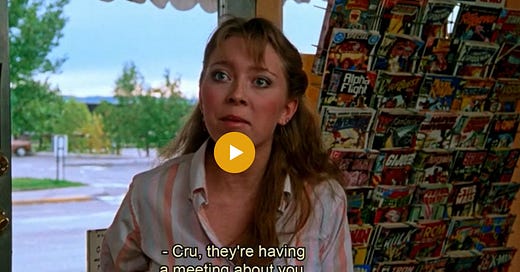



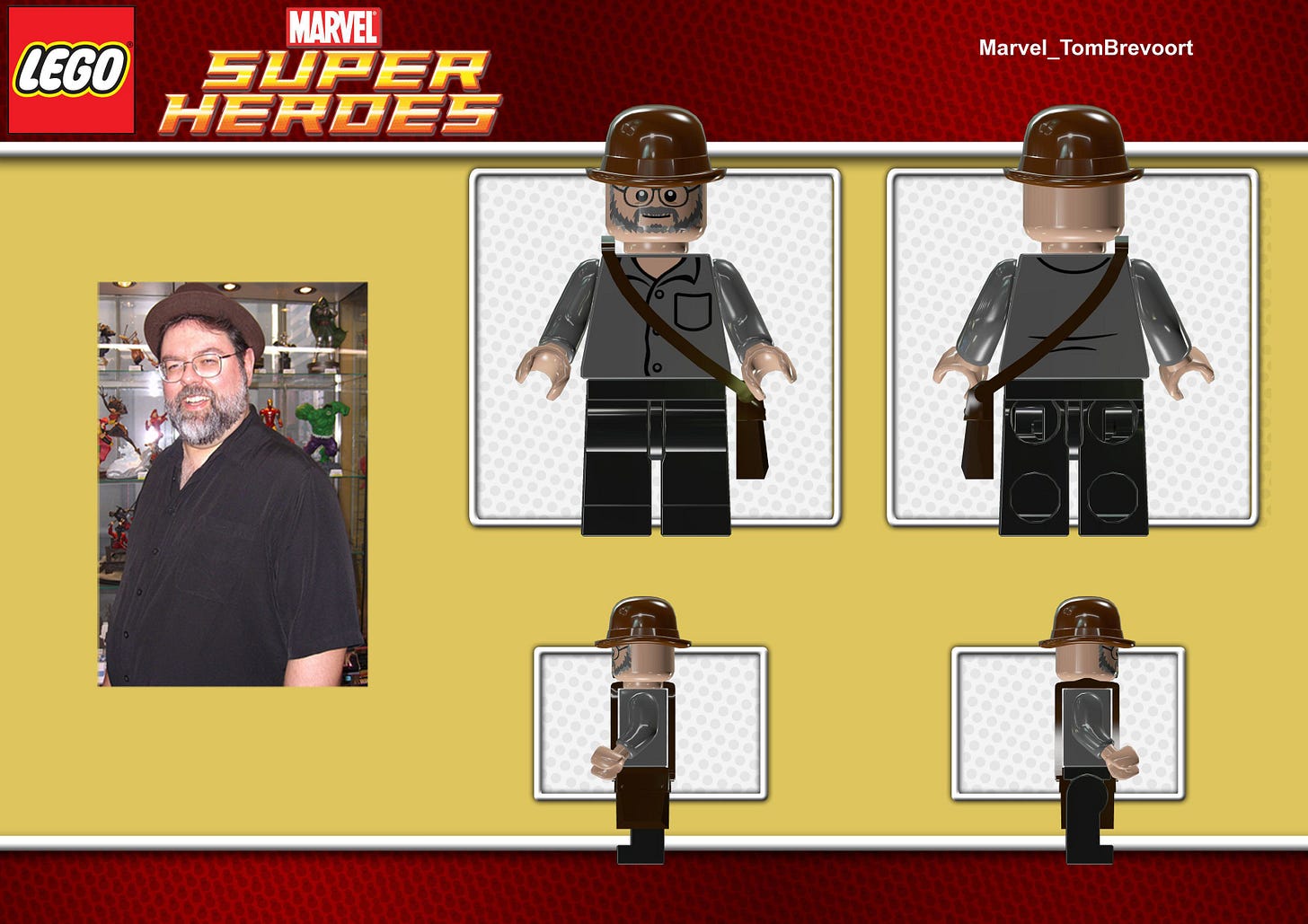
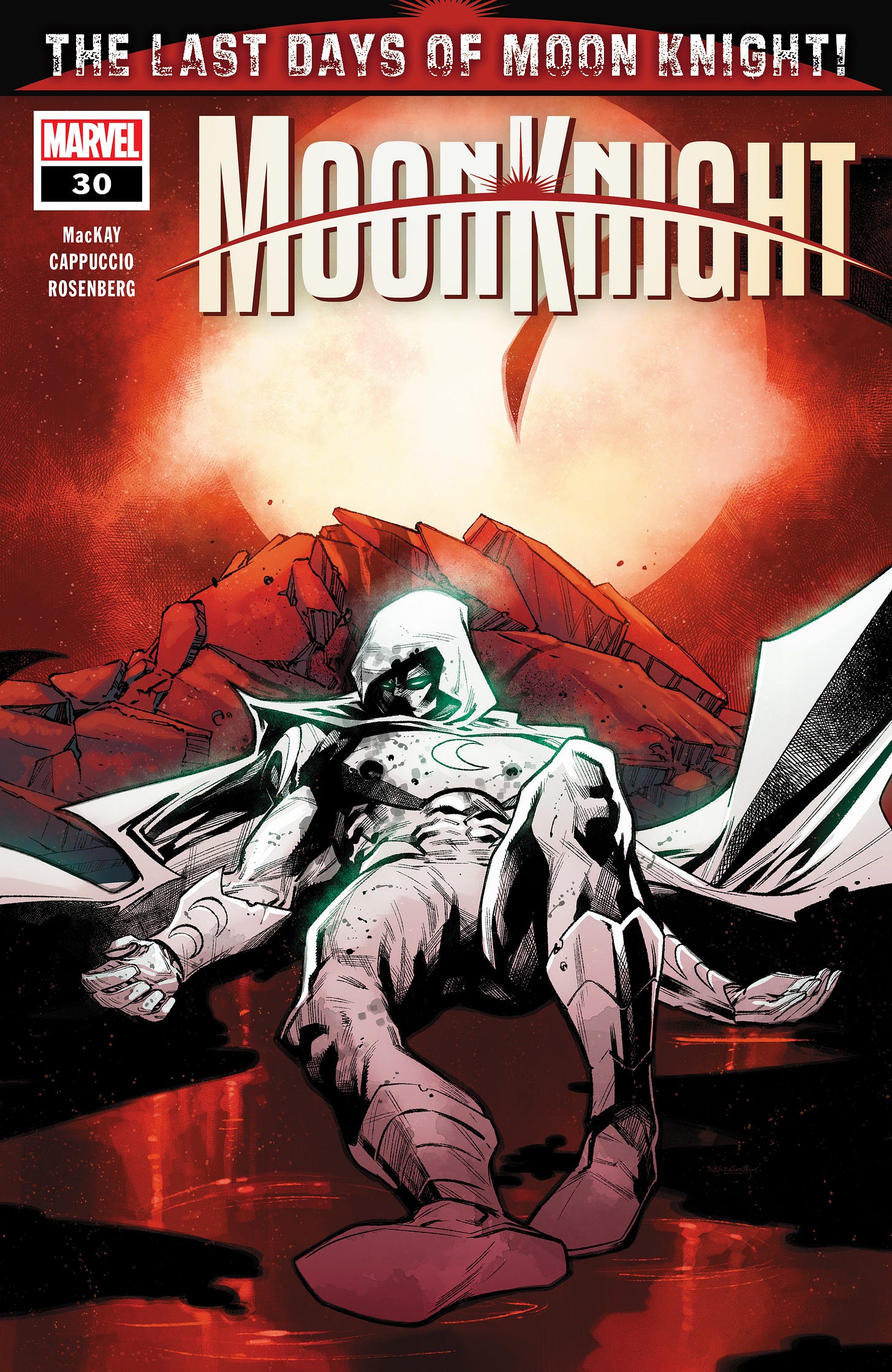
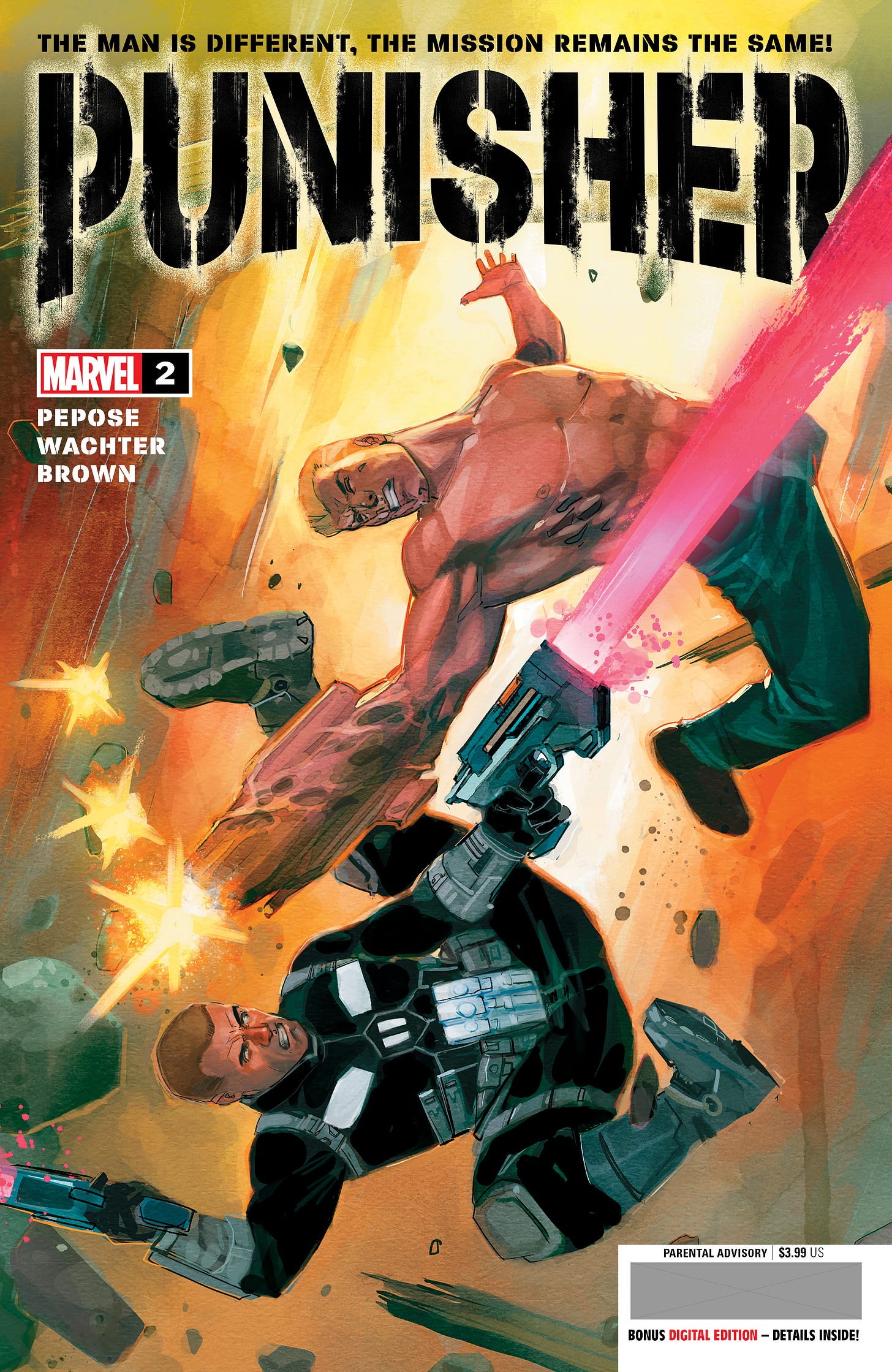
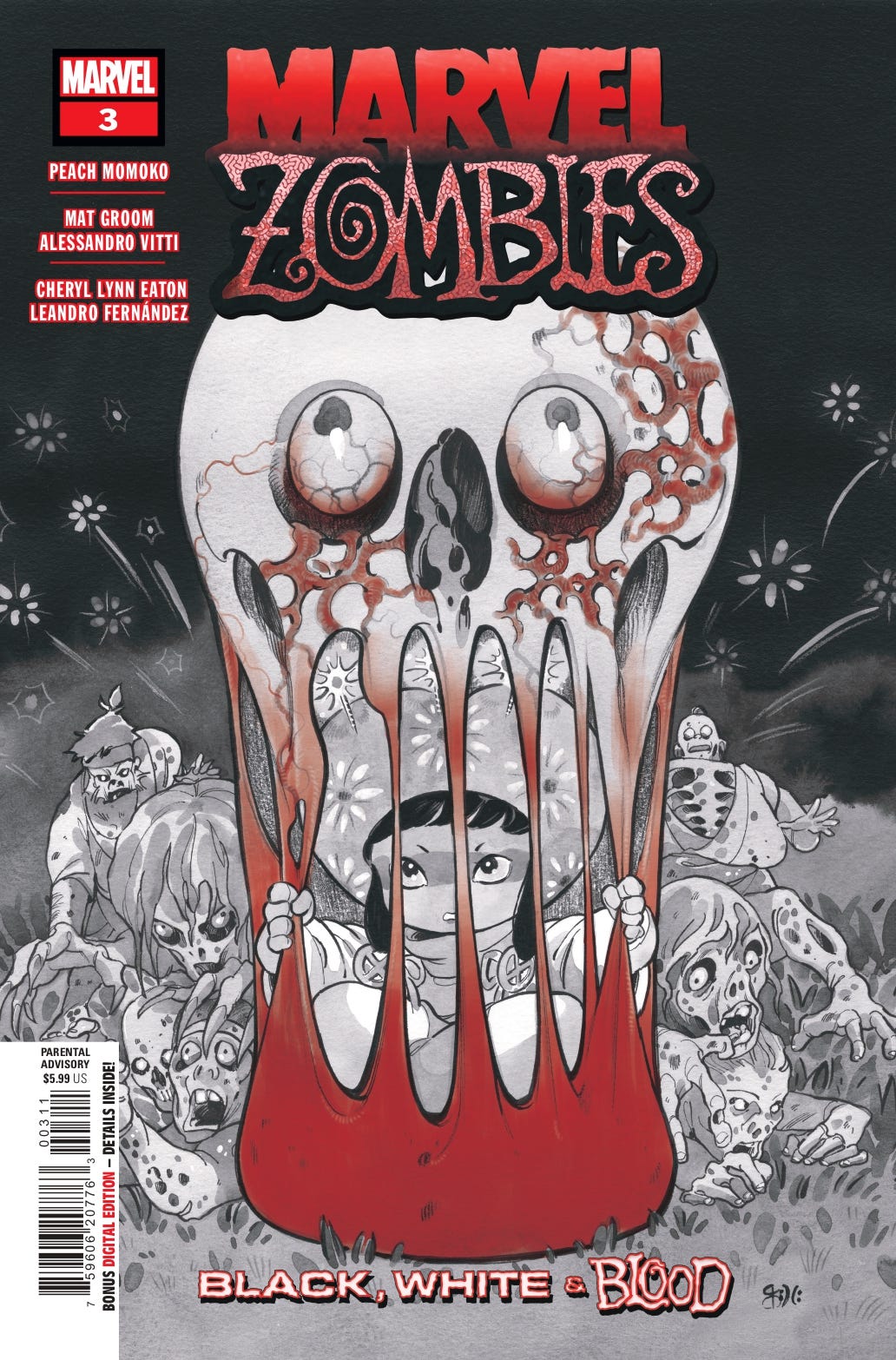

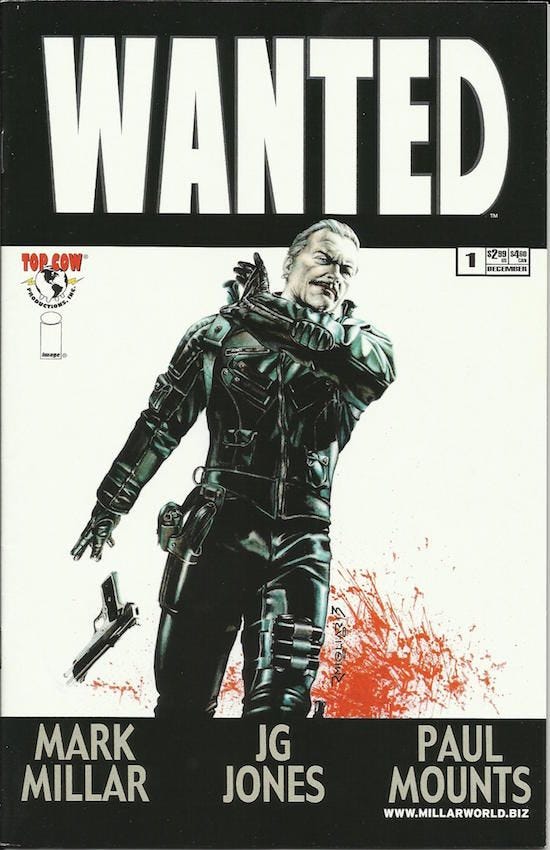
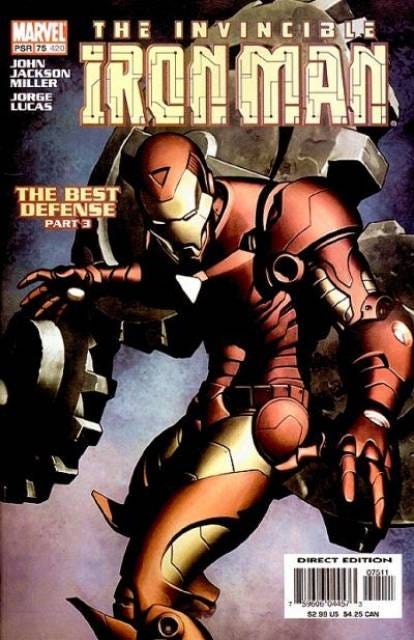
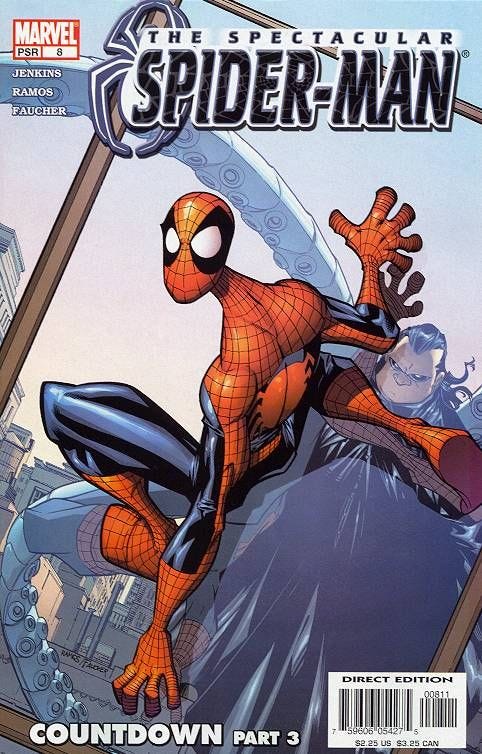
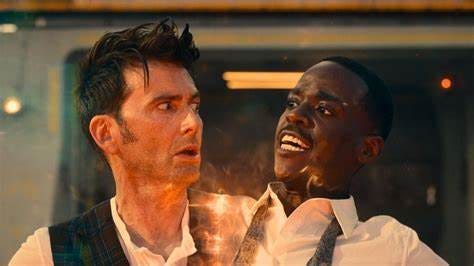
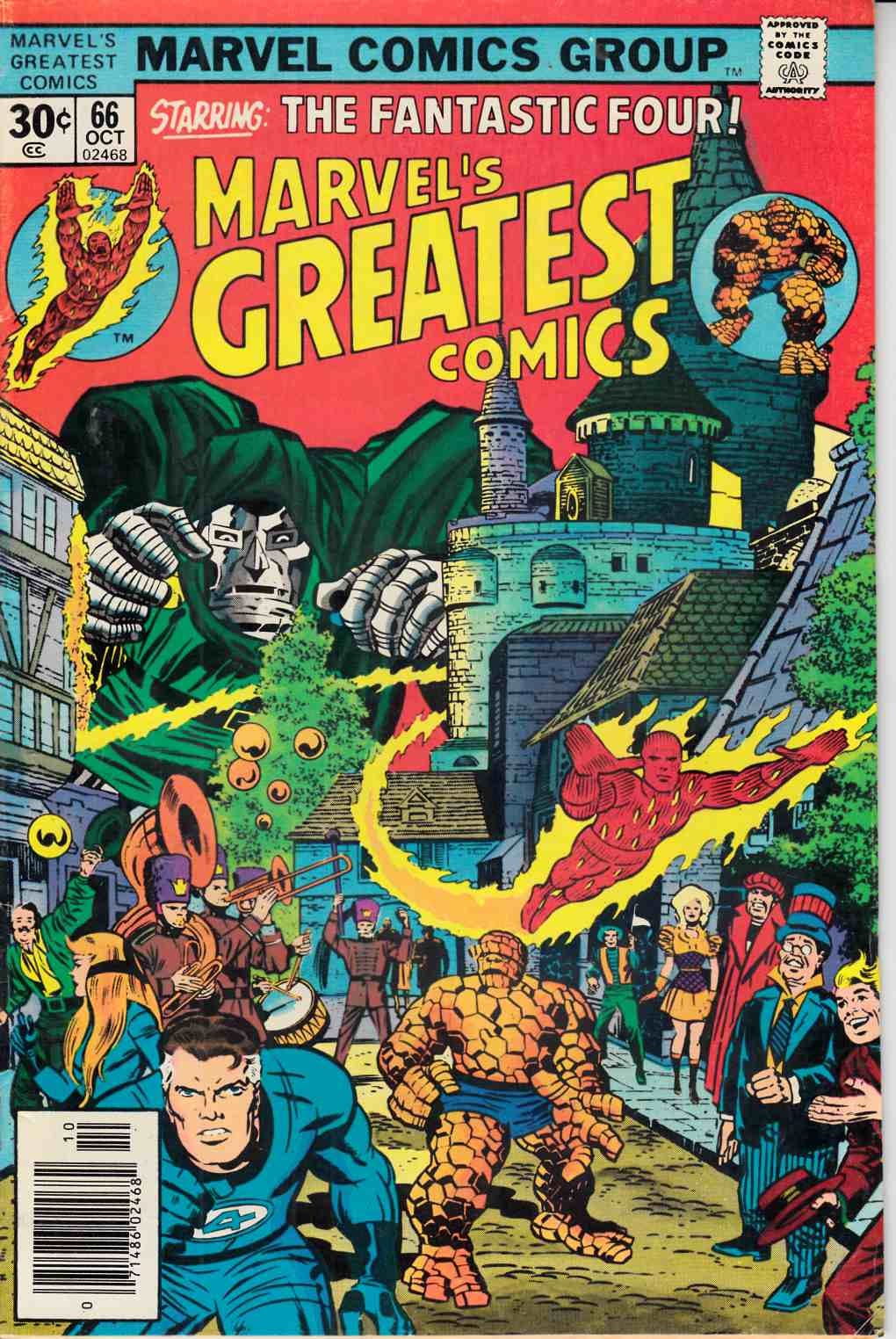
Re: your last question, my advice is that you shouldn't feel like you need to use all of your rubrics every time. Monofocus in particular hits better when you're enthusiastic or have some specific thought to get out rather than just dutifully reporting what you consumed
I think a fun new addition to your newsletter would be if you interviewed comic creators and editors. Like, oh I don't know, me?